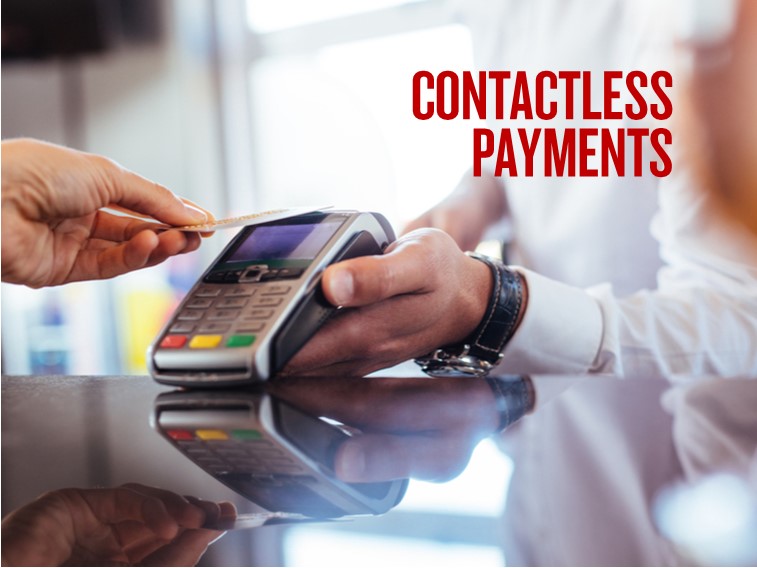SME business conditions fell in Q2


Insight
The implementation of social distancing has meant some businesses are reviewing their customer interactions at the point of payment.

Social distancing was recently mandated by the Australian federal and state governments, and has had immediate ramifications for large swaths of the economy.
At the very frontline of this are the still operating retailers and essential service providers that rely on customers who pay them in person. The implementation of social distancing has meant some businesses are reviewing their customer interactions at the point of payment.
Over the last 20 years in Australia we have seen a rapid increase in payment options for Australian businesses to consider for collections management. More recently the rapid increase of contactless payments used at point-of-sale for Australian consumers via their card or digital wallet.
From a pure hygiene perspective, a contactless transaction via a merchant terminal offers a clearly lower physical transmission risk profile relative to cash. And for payments under $100 in Australia to date, no PIN is required, further reducing the risk. Many countries globally have already moved to lift this limit to further reduce physical terminal interaction during the crisis 1. In Australia, major supermarkets, issuers and acquirers, are now together pushing ahead to double this limit and are currently working with their own businesses and merchant customers to progressively rollout this change to terminals and cardholders 2, 3.
For any business that’s looking at ways to move away from cash acceptance, and support card and digital wallet payments from customers during this crisis and beyond, implementation of a merchant acquiring service with a compliant card reader for contactless transactions is an important step. An even more secure and efficient approach would be to consider POS integrated merchant terminals. With the required transaction amount automatically presented on an integrated terminal from the POS, it reduces the need for employees to touch the terminal even further.
The major card schemes, terminal providers and acquiring banks are in various stages of reviewing what a change to the current contactless limit for PIN entry means for their own broad base of merchant customers. This is a temporary measure, applied for a 3-month period, but with potential to be reviewed if the social isolation rules need to carry longer. This will reduce physical terminal interactions on the whole, but whilst this may have direct benefits for some businesses, it may be less impactful for others. Considering a typical retail environment with customers moving through a space and encountering many surfaces and products, the merchant terminal represents only 1 of many possible transmission points.
It’s likely that changes for the physical card holders will take some time to implement for banks. However digital wallets such as NAB Pay, Apple Pay, Google Pay, Samsung Pay, Fitbit Pay, Garmin Pay, etc will see the change occur immediately.
With the cost of payment acceptance an ongoing focus of the RBA, combined with the rapidly increasing functionality, accessible and convenience for consumers, cash use has already been dropping for some time. There is commentary already that this current crisis may perhaps the catalyst to accelerate the demise of physical cash 4,5. And the corresponding rise of global digital platforms like the FAANG’s (Facebook, Apple, Amazon, Netflix, Google) and others like Uber and Spotify has been so extensive that it would now be difficult think of life without them. Many of these have been introducing a wallet style solution to keep users engaged longer within their environments.
Broadly, most digital wallets can be thought of as just electronic versions of your physical wallet. They can store users’ payment details, enabling users to make purchases online or in person by tapping a digital device (Smartphone, watch, etc). Some also can capture multiple payment instruments, such as credit or debit cards and bank accounts or, in some cases, even store money to create a type of prepaid account. For example, the Brisbane City Council recently mandated that the existing Translink prepaid ‘go card’ will be the only payment type accepted under the current crisis, and is refusing cash payments for fares on bus and ferry services 6.
With an industry response occurring currently for increasing the contactless limit for PIN entry, more transactions will be performed without customers touching the terminal. The experience will vary depending on the merchant as individual banks will each progressively implement this change for both merchant and cardholder customers.
At $100, the pre-existing PIN limit for Australian merchants was already one of the highest in the world. At some stage all banks and retail outlets will revert to the $100 limit when the health risk has decreased.
The broad acceptance of this transaction type in Australia is of course a positive in managing the new and unexpected risk of this type of infection spread. It’s important for businesses to remember however that whilst the terminal is a point of contact, they need to consider the range of interactions customers have within the journey through their operations, and take a holistic approach to hygiene and social distancing measures. Reorganisation of the counter and checkout setups can be considered for instance, to ensure physical distance is effectively maintained.
Speak to a specialist
© National Australia Bank Limited. ABN 12 004 044 937 AFSL and Australian Credit Licence 230686.